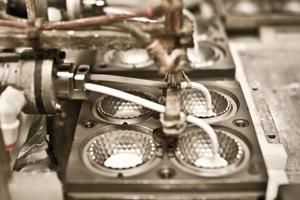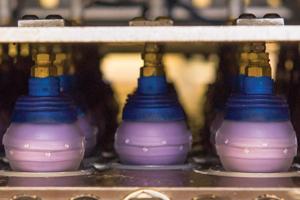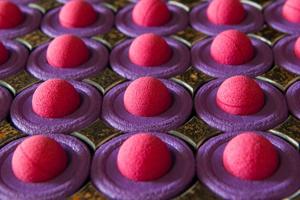Nowadays, golf balls are characterized as 2-piece, 3-piece, etc in reference to the varying layers of rubber materials that make up the core of the ball. The covers are typically made of either urethane or surlyn.
One of the age old questions, along with “are we alone in the universe?” and “what happens after life?” is “what is inside a golf ball?”. What secrets hide within that white exterior? Is it made of chocolate pudding or maybe vanilla? I can say that as disheartening as it is, the inside of a golf ball is not a tasty treat.

Well if golf balls are not filled with pudding, then what is it? Golf ball composition has changed dramatically throughout history. Originally, simple wooden spheres were used. However, these were replaced with featherie balls sometime within the 15th century. These balls were made of leather, filled with feathers, and painted white. These handmade leather golf balls had some drawbacks. The balls absorbed water and moisture, making them change density throughout a round. Additionally, hand sewn leather balls are far from perfectly circular, so ball flight was much more irregular than it is today. In the 19th century, the golf ball would once again change form.
The gutta percha ball, or often referred to as “guttie”, replaced the featherie ball. This ball was made out of the widely popular natural latex from palaquium gutta trees. Unlike the featherie balls, guttie balls did not have another material for their core. This allowed for the balls to be considerably cheaper than previous golf balls because they could be formed in molds. They also were much more uniform in shape and did not absorb water. Guttie balls were eventually found to have more stable flight characteristics when scratched. This led to them being produced with the first textured surface called “brambles”. However at the turn of the 20th century, gutta percha balls would see a serious development.

Titleist Pro V1x Ionomeric Casing. Click HERE for Source
Coburn Haskell and an employee from Goodrich Rubber Company, found that by winding rubber strands around a solid core, and then coating the ball with gutta percha, they were able to produce a golf ball that traveled much further. These balls became known as Haskell balls. While originally featuring the same bramble surface as the guttie balls, the Haskell balls would become the first to feature the dimples we know today. This ball was by far the most popular ball for much of the 20th century. In 1967 it was modified slightly by replacing the outside cover with surlyn, a new resin material. Around the same time, the technology was developed to eliminate the need for a layered rubber core. This led to the common and inexpensive 2-piece ball that many people play today.

Nowadays, golf balls are characterized as 2-piece, 3-piece, 4-piece, etc. This designation refers to the varying layers of rubber materials that make up the cores of the ball. The cover of a golf ball is typically made of either urethane or surlyn. The number of cores and their exact composition are engineered for varying performance advantages. Interestingly, the number of cores does not equate directly to a more premium ball. Titleist Pro V1’s for example, are only a 3-piece ball. While a relatively average core count, the premium materials used are what makes these balls a premium option. All the developments in golf ball design throughout history have worked to make balls travel further than ever, and have more control near the green. Yet, we all know we will still blame the ball here and there for those bad shots.
Authored by Taylor Morton


1 Comment